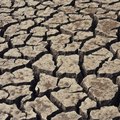

Heavy rainfall or a major to minor leakage will cause water from the pipe system to accumulate within your compound. However, outdoor pipe drainage has downsides, especially during inevitable leakages or rainfall in a flood-prone area. Pipes are a common choice for home drainage because they are readily available and versatile enough to carry water away from areas where they can damage your building.

The common types of drainage used with river rock are pipes and gutter systems. River rock is often used to inlay drainage systems to improve the overall aesthetics and improve the absorption. The versatility of river rock can work with different drainage types, so choosing it doesn’t mean you have to rule out other options. River Rock Can Be Used To Fix Other Drainage Options When set right, these rocks will maximize the absorption of the ground beneath them as well as the water channel system of your overall landscaping. 3-inches to 5-inches (7.62 to 12.7 cm) river rocks ( source).1-inch to 3-inches (2.54 to 7.62 cm) river rocks.The river rock sizes you can choose from include: You can use stones of various sizes to create the right river rock drainage system. With larger volumes of water, strategically placing the rocks will create a channel to lead it to a portion of land where it can be easily absorbed. This helps prevent your landscape from getting water-logged by small amounts of water. River rock stones don’t form a watertight system, so they allow the ground beneath to absorb water and moisture from above. Things To Know About River Rock Drainage 1. Check out the DynaTrap Mosquito & Flying Insect Trap – Kills Mosquitoes, Flies, Wasps, Gnats, & Other Flying Insects – Protects up to 1/2 Acre (link to Amazon).


 0 kommentar(er)
0 kommentar(er)
